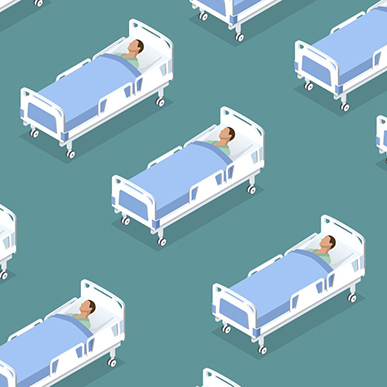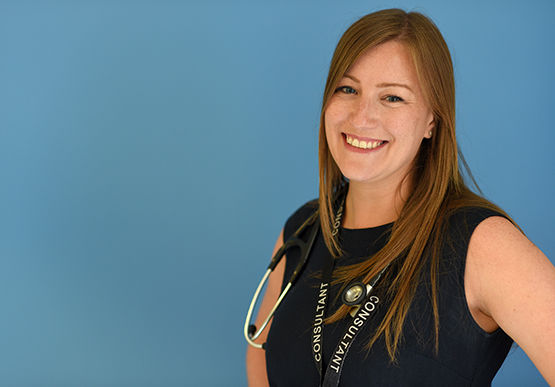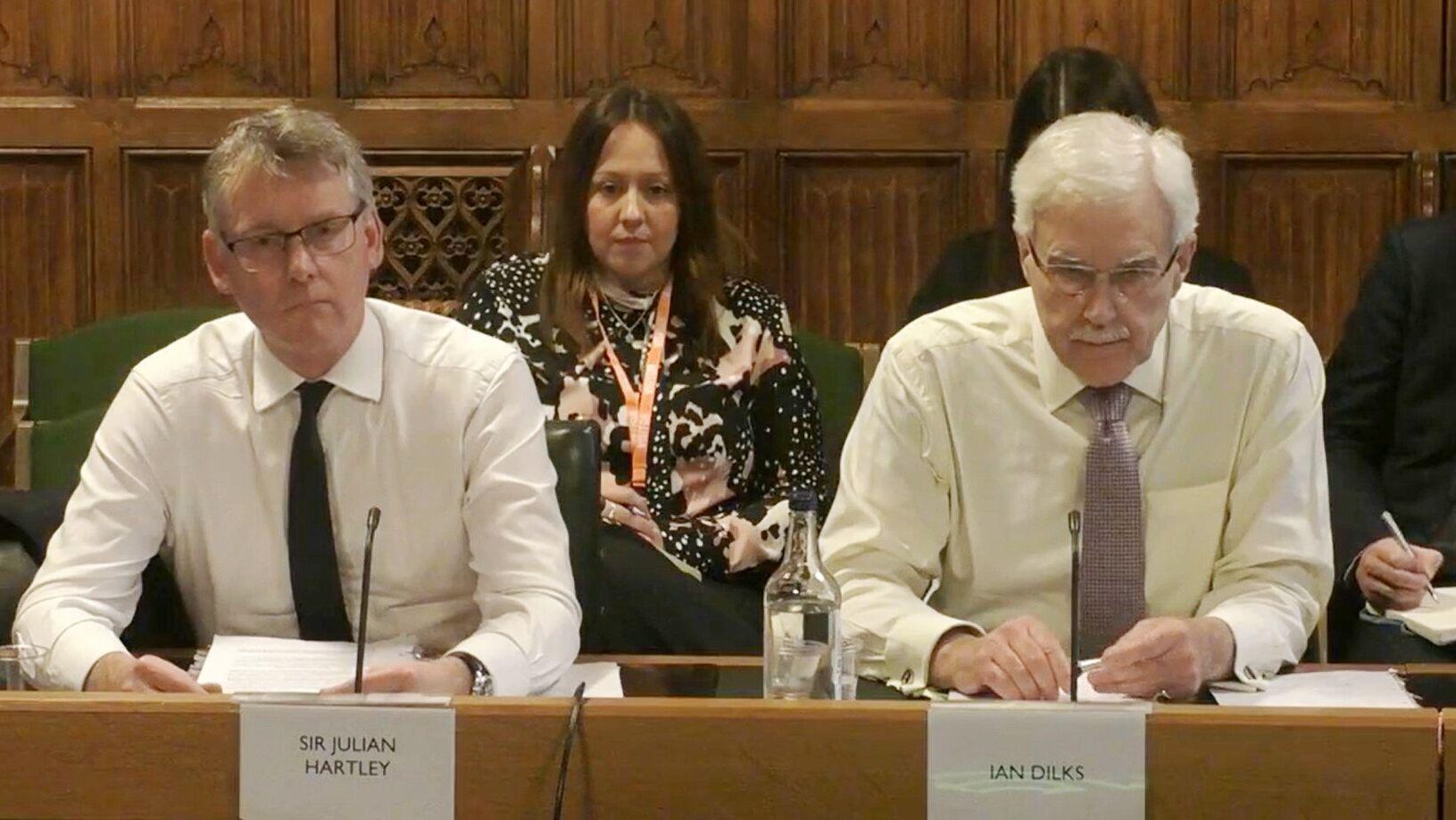Ipswich joins forces with local partners to slash bed blocking
Managers and doctors from Ipswich Hospital tell us how they joined forces with local partners to dramatically reduce their bed blocking problem.

Delays in transferring patients out of hospitals to settings better suited to their recovery are a clear own goal for overstretched NHS and social care services. At Ipswich Hospital, now part of the East Suffolk and North East Essex Foundation Trust, things came to a head in late 2016: rising acute admissions left the trust with 80 patients in acute beds on its delayed transfer of care (DTOC) list. At 16% of the trust’s total beds, this was more than five times the national target.
“Often, we could get patients medically fairly well, but if they remained in hospital for any length of time they would [deteriorate] and ultimately end up requiring significantly longer stays,” explains consultant acute physician Lauren Hoare.
Growing financial pressure
The trust’s costs were outstripping commissioner income from Ipswich and East Suffolk CCG and, as the financial pressure grew, the trust’s management realised they needed a change of approach. “We realised very quickly there was no way in which we were simply going to be able to trade our way out of this,” says Ipswich’s director of operations Neill Moloney, who is now managing director of the merged trust. “It was only when we really started to listen to what our partners were saying to us, that we started to come up with solutions that made the difference.”
Moloney’s counterpart at the CCG, Richard Watson, says the need for “fundamental” change was widely recognised. “We kind of all put our cards on the table and had a bit of a heart-to-heart about how we all felt this problem needed tackling,” he recalls.
The trust and CCG agreed a new funding arrangement up to the end of 2016-17. This replaced payment for activity or results with a guaranteed income contract which, says Moloney, effectively “gave us the incentive to seek to reduce demand”.
Watson, who is chief transformation officer at the CCG, adds: “The delayed transfers were the symptom of a bigger problem of the effective management of hospital discharge which is why it opened up a much bigger programme of work.”
Transformative and collaborative
The new, “transformative” approach took a forensic look at what lay behind problems and how the system as a whole was affected, in what participants describe as a genuinely collaborative spirit. It led to many, interlinked initiatives, some happening within the acute hospital and others in community settings and social care.
Key features included improving discharge and assessment processes, increasing levels of support for patients to avoid admissions in first place or reduce lengths of stay, and extra investment in “re-ablement” and rehabilitation services to get patients home.
The trust started working with three organisations – the Suffolk GP Federation, The Norfolk and Suffolk Foundation Trust and Suffolk County Council – to deliver NHS community services on a different model: as an “alliance” of providers.
Moloney says this significantly improved the trust’s relationships with other partners and gave all parties a shared sense of responsibility for delivering commissioners’ “system-wide priorities”.
Ipswich hospital, working with its alliance partners, reorganised its discharge process into a “Discharge to Assess (D2A)” model aimed at ensuring safe, effective discharge to the most independent living arrangements possible. This model involved ensuring each patient’s needs were identified at the earliest stage by multi-agency teams, or within A&E, then allocating them to one of four pathways backed up with dedicated resources.
Get up and go
The trust realised, Moloney explains, that some patients were going home with care requirements that arose just from their stay in hospital; for example, patients who weren’t kept mobile in hospital might be prescribed community care services – some of which they ultimately might not need.
“So we invested in support, in therapies and what we’ve called a ‘get up and go’ campaign within the hospital to make sure we were mobilising patients so they were not deteriorating and could leave without the level of support they might previously have needed,” he says.
“We’ve tried to get the patients back into their own homes, a familiar environment, and then do that assessment,” Moloney adds. “We can see how they’re coping and we’ll assess whether they need all of that care on an ongoing basis and some rehabilitation in their own homes.”
Under the trust’s model, patients assessed as needing re-ablement support in their homes are now supported for up to six weeks by joint NHS and council re-ablement teams.
Managers have introduced what they call “tight oversight” of potential delayed transfers of care, with regular meetings involving key operational and strategic staff. Some patients who are unable to return home immediately now go to a community hospital designated as a ‘short term assessment re-ablement and rehabilitation service’ (STARR) for two-weeks’ intensive rehab under a consultant geriatrician and team of nurses, therapists and healthcare assistants. The local health and care system invested an extra £400,000 in this pathway.
Others go for less intensive rehab geared to managing their long-term needs so that fewer patients require ongoing care in residential and nursing homes. Around £200,000 was invested in this.
Red to green
Another Ipswich initiative is so-called ‘Red to Green’ weeks, where hospital staff make intensive efforts to reduce the delays that hold up patients’ discharge. ‘Red Days’ are days where bottlenecks impede progress towards a patient’s recovery, while a “Green Day” is one where a patient receives every intervention they need, such as diagnostics or therapeutic support, within an expected time and delivered to set standards.
Moloney says that trying to eliminate those Red Day that bring patients “no value” has motivated clinical staff to focus their energies on the support patients need “to get back to where we want them to be – which, ideally, is at home”.
The trust has also tried to reduce demand directly by setting up a specialist assessment unit for frail elderly patients to provide an alternative to acute admission.
In October 2017, Ipswich Hospital NHS Trust became responsible for services in three community hospitals and a range of community services. Managers and clinicians say acute and community services are starting to work as a single team with close links between community nurses and hospital wards and an increase in the capacity for social care assessments to be carried within the hospital.
Acute physician Lauren Hoare says: “We’ve got a very close relationship with our community colleagues. We try to encourage as much community-based care and ambulatory care as we can and get patients out of hospital so they can remain fit and active.”
 Dr Lauren Hoare: “It certainly feels like we’re leading in many ways, in particular with our integration with the community.” Photo: ESNEFT
Dr Lauren Hoare: “It certainly feels like we’re leading in many ways, in particular with our integration with the community.” Photo: ESNEFT
One team
The “patchwork” of different initiatives for avoiding admissions that had evolved over time was “pooled into one team” and this has proved “incredibly useful,” says Moloney. Known as the Reactive Emergency Assessment Community Team (REACT), it operates round the clock and includes nurses, therapists, social services staff and carers.
The REACT team receives referrals from GPs and ambulance staff for patients who have reached crisis point. Patients can be assessed in their own homes to see what services and support they need to prevent them being admitted. The team also assesses patients in A&E and can arrange the support that will allow them to be discharged safely.
Hoare is clinical lead for the outpatients antibiotics service, which is administered by REACT and sends nurses out to patients who may need injections of antibiotics, for example. “It allows them to get back to their usual life and for us it’s a prolonged admission that we’re avoiding or significantly reducing – so it saves bed days and money and is better for patient care,” she explains.
Impressive results
The results have been impressive in both quantitative and qualitative terms. On 1 February 2018, the hospital had just ten patients on its Delayed Transfers of Care (DTOC) list, compared with 49 a year earlier. Managers say the fall in DTOCs, from its peak of 80, has effectively freed up two wards-worth of extra capacity to treat those patients who “absolutely need” to be in hospital. Although Watson admits that a “plateau” of 16 to 25 DTOCs appears to have been reached – around 3.3% to 4% of the hospital’s beds – he says the next step is to try to hit a “stretch target” of 2.5%.
The new Discharge 2 Assess pathways have produced an “encouraging shift of patient flows”, according to an interim analysis produced in December 2017, with a higher proportion of patients being moved out of hospital without the need for ongoing support.
“We’re getting patients home quicker than would otherwise have been the case,” says Moloney. “We now have many more patients who are going home without the requirement for additional care and we’re also able to demonstrate that there is a lower percentage of those patients needing nursing and residential homes as a result of the actions that we’re taking.”
Overall, the trust recorded a 4% reduction in emergency admissions during 2017-18 compared to the previous year, and in the first quarter of 2018 there were 12% fewer admissions.
Moloney adds: “The whole alliance is now holding each other to account. While there has been some up-front initial investment, we’ve been able to agree to use the Better Care Fund in some cases, with some additional investment from the CCG and the trust itself.”
Both he and the trust have been on a “journey”, Moloney says. “I was very internally focused but am now much more externally focused and considering how as a system partner I can support an improvement in the way in which we care for patients and people that live within this locality.”
Changing relationships
Moloney says the biggest benefit, particularly over the last 12 months, has come from developing relationships with local partners to look at alternative models of care in the community and working with them to deliver a joint set of objectives. “Not only were we able to get through last winter reasonably well but we had fewer beds open this year than in previous years,“ he concludes.
Acute physician Lauren Hoare adds: “I think also compared to some other trusts we’re really thinking outside the box, and of different ways we can do things that will improve patient care and reduce our bed days. It certainly feels like we’re leading in many ways, in particular with our integration with the community.”
Asked what has made the biggest difference of all, Watson says: “I think it’s the cultural change and relationships. It sounds very touchy-feely but you couldn’t replicate what we’ve done in terms of process and results if you haven’t already got a system which has a set of established relationships of trust.”
Related News
-

Regulating the managers: more questions than answers
The Labour government’s plans for regulating NHS managers are still shrouded in mystery, and the three options on the table each have their pros and cons. Rhys McKenzie weighs up the choices and gauges the views of MiP members on the best way forward.
-

The inspector falls: why the CQC needs a fresh start
After years of chaos, the Care Quality Commission urgently needs to rebuild trust and credibility with the public and the services it regulates. What needs to change and what are the priorities for new boss Sir Julian Hartley? Alison Moore reports.
-

Voice, value and vision: what analysts need from the NHS
Data analysts play a vital role in an NHS which is increasingly data-driven and focused on public health trends. But the NHS faces fierce competition for skilled analysts and many feel the health service fails to value them or fully use their talents. Alison Moore reports.